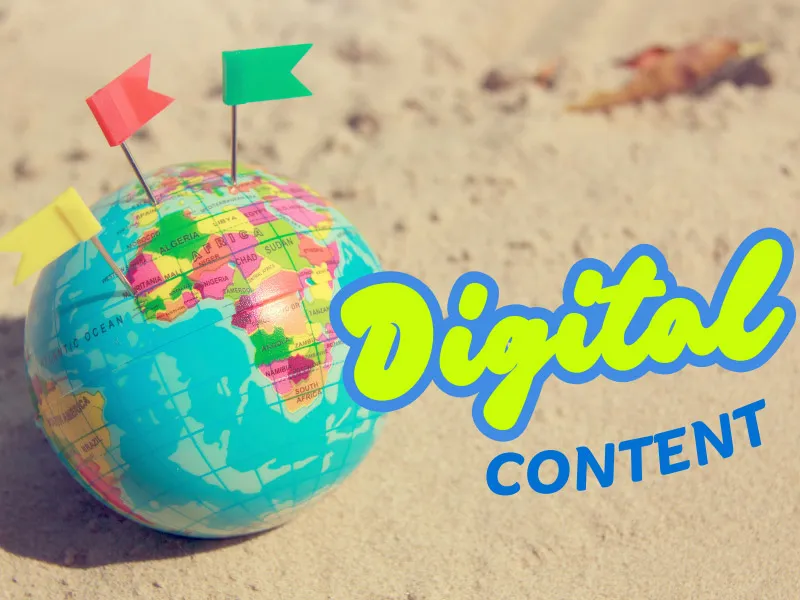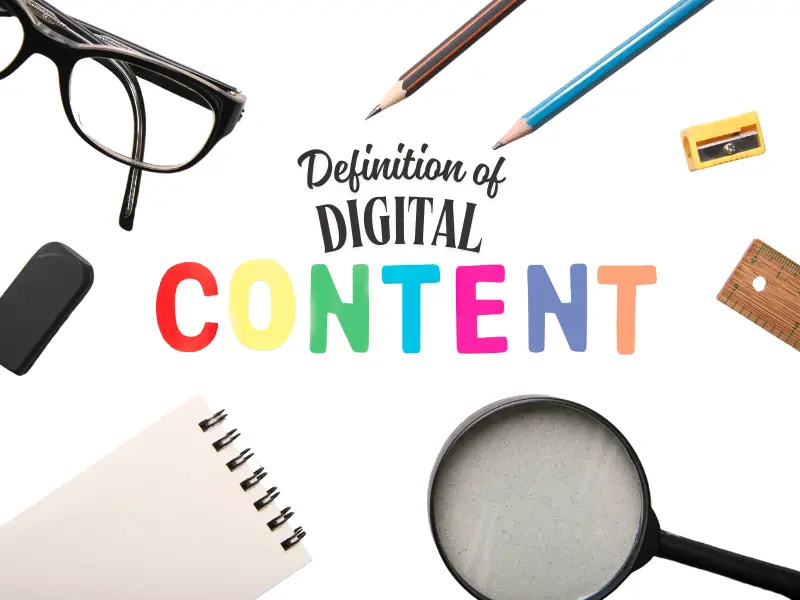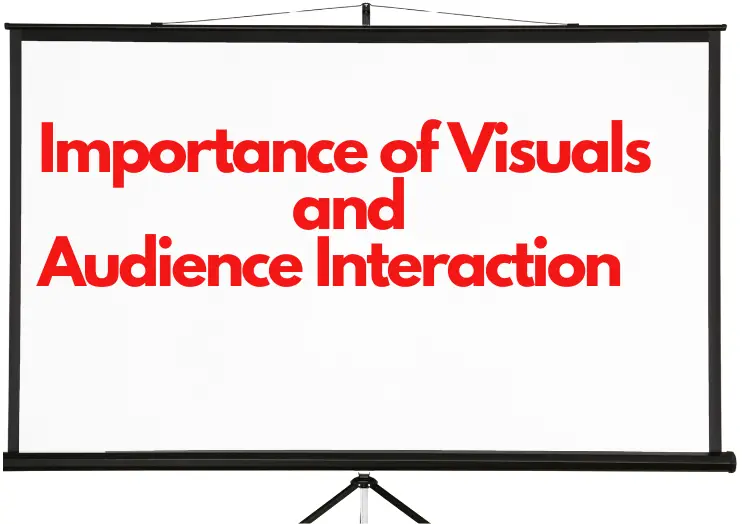Exploring The World Of Digital Content: Types And Definitions

-
Jim Traister
Struggling to stand out online? Digital content plays a big role in boosting brand awareness and connecting with customers. This blog will explain the types of digital content and how they can work for your business.
Keep reading—it’s simpler than you think!
Key Takeaways
- Digital content includes blogs, videos, infographics, memes, and social media posts. These tools help small businesses boost brand visibility and connect with customers.
- Infographics simplify data into visuals; memes mix humor with marketing; videos use storytelling to engage viewers and improve SEO. Tools like Canva make creating content easy for anyone.
- Blogs build authority by sharing tips or insights while improving search rankings through keywords. Social media posts show personality and encourage audience interaction at low costs.
- User-generated content (UGC) builds trust through real customer experiences, while email newsletters maintain communication with clients using updates about sales or tips.
- Interactive trends like quizzes or AI-driven personalization improve engagement, helping businesses stand out in today’s digital landscape without big budgets.
Definition of Digital Content

Digital content includes any media shared or published online. It covers text, videos, images, audio files, blog posts, memes, social media updates, and podcasts. Small businesses can use it to connect with customers on platforms like Facebook or TikTok.
This helps improve brand awareness and drive sales without spending a fortune on ads. Effective digital content doesn’t just grab attention—it builds trust with your audience.
Think of it as anything online that tells your story or markets your services. Whether it’s an infographic explaining your product or a YouTube video showcasing customer reviews—it’s all digital media built for discovery and engagement!
Different Types of Digital Content
Digital content comes in all shapes and sizes. From eye-catching visuals to engaging text, each type speaks directly to your audience’s preferences.

Infographics
Infographics turn boring data into eye-catching visuals. They simplify complex ideas, making information easy to digest. This boosts audience engagement and improves brand awareness. Small businesses can use infographics to share facts, tips, or statistics that grab attention on social media platforms or websites.
Tools like Canva and Adobe Spark let you create professional designs without hiring a designer. Infographics also drive more website traffic by increasing backlinks and improving search engine optimization (SEO).
Tools for creating infographics
Crafting sharp infographics doesn’t require a graphic design expert. With the right tools, you can create visuals to boost audience engagement and brand awareness.
- Canva
Canva is user-friendly and perfect for creating visual content. It offers pre-made templates specifically created for small business owners. Simply drag, drop, and customize.
- Adobe Spark
Adobe Spark makes infographic creation simple with its easy interface. Save time while making professional graphics rich in style.
- Piktochart
Piktochart is great for building detailed visuals like case studies or customer testimonials. Insert charts, icons, and real data to inform your target audiences.
- Visme
Visme combines creativity with storytelling techniques. Draw attention by merging videos, photos, and text into striking media content.
- Easel.ly
Easel.ly provides small businesses with tools to explain ideas visually. Customize graphs and diagrams for blog posts or email marketing campaigns.
These platforms are budget-friendly solutions to improve visibility online without hiring a team!
Memes
Memes mix humor with a message. They use images, text, or videos to grab attention fast and spread quickly across social media platforms. For small businesses, memes are gold—cost-effective and easy to share.
A single funny meme can go viral, reaching thousands without extra marketing costs.
They connect with your target audience in seconds if done right. Understanding trends and blending them into your brand’s voice is the secret sauce here. As “visual content made simple,” memes offer high engagement for low investment—a no-brainer for smart digital marketing strategies.
Videos bring stories to life…
Cost-effectiveness and audience reach
A single meme can go viral without costing a fortune. You don’t need fancy tools or big budgets—just creativity and basic image editing skills. Small businesses can use free apps like Canva to make something fun, relatable, and shareable in minutes.
These short bits of visual content catch attention fast, making them perfect for grabbing smartphone users’ scrolling thumbs.
They also pack a punch in terms of audience reach. A clever meme spreads rapidly on social media platforms such as Instagram, TikTok, or Facebook. Even with zero ad spend, they get shared across feeds by people who find them funny or relevant.
This ripple effect boosts brand awareness while keeping marketing costs low—a win-win for any business owner!
Videos
Videos grab attention fast. They share ideas better than plain text or pictures. Most videos last just a few minutes, enough to show off products or services clearly and powerfully.
Using good storytelling can make viewers feel connected to your business. Adding keyword research helps your video rank higher on search engines, pulling in more traffic.
Small businesses can use videos on social media platforms like Instagram or YouTube for brand visibility. An example is live streams—they boost audience engagement as people respond in real-time.
Videos provide value throughout the customer journey, from sparking interest to closing sales faster with strong calls to action.
Importance of keyword research and storytelling techniques
Keyword research helps pick the right topics for videos. It shows what your target audience searches for online. Use tools like Google Analytics to find popular search terms and trends.
This boosts discoverability and increases website traffic, drawing in more viewers or customers.
Good storytelling techniques make content relatable and engaging. A strong narrative keeps people hooked, whether it’s a how-to video or customer testimonials. Stories create emotional connections that build trust and brand loyalty over time.
Blogs next play a key role in building authority while keeping readers engaged with useful tips or information!
Blogs
Keyword research and storytelling breathe life into blogs. Blogs help independent business owners build authority in their niche. They are perfect for sharing product information, industry trends, or practical guides.
Posting regularly boosts website traffic and keeps readers engaged with fresh content.
Blogs also improve search engine optimization (SEO). By using targeted keywords, blogs can rank higher in search results, driving more visitors to your site. Sharing personal insights or answering common questions builds trust with your audience.
A blog is not just text; it’s a tool for connection and growth.
Role in building authority and maintaining engagement
Blog posts establish trust in your niche. Sharing valuable insights makes you a go-to source for information. For example, a bakery owner can write about cake-decorating tips or recipes for unique pastries to show expertise.
Posting regularly keeps readers coming back, increasing website traffic over time. Consistency also helps boost search engine optimization (SEO). Blogs packed with keywords like “content creation” and “digital storytelling” rank better on Google searches.
Engagement grows when you respond to comments or questions on your blog posts. This creates an open dialogue with readers and builds connections. Fresh content shows you’re active and invested in helping others solve problems or learn something new.
A well-maintained blog can turn casual readers into loyal fans or customers who trust your advice—leading smoothly into social media strategies that further increase visibility.
Social Media Posts
Social media posts help businesses connect with customers and boost brand awareness. Posts like photos, short videos, or catchy captions show off a brand’s personality. These platforms let small businesses share their story without huge budgets.
Simple tools make creating content easy for anyone. Canva or Adobe Express can build eye-catching designs fast. Social media also increases audience engagement by sparking conversations in comments or shares.
This keeps the audience active while getting your message out there.
Next up: Importance of Visuals and Audience Interaction
Platform for brand visibility and personality expression
Posts on social media platforms shine a light on your brand. They act like a billboard, showing your products and personality to millions online. Through clever captions and eye-catching visuals, you express values and connect with the target audience.
These posts tell customers what makes your business different.
Platforms like Instagram or Facebook help small businesses stand out in crowded markets. A relatable tone builds trust and loyalty while boosting brand awareness. Content that reflects honesty or humor grabs attention faster than bland advertisements.
Importance of Visuals and Audience Interaction

Visuals speak louder than words—they grab attention fast and keep it. Engaging with your audience builds relationships, trust, and loyalty over time.
Impact of engaging with the audience
Engaging with your audience builds loyalty and trust. Asking simple questions or using polls makes people feel heard. A small business owner once asked on Facebook, “How do you like your prime rib cooked?” The post received a flood of comments and interaction.
People love sharing their opinions, especially when encouraged in a casual way. This type of engagement strengthens brand awareness and boosts online presence.
Active conversations also help improve content strategy. Customer feedback reveals preferences that guide marketing decisions. Social media platforms are great for this exchange—you don’t need fancy tools to start engaging today! Polls, call-to-action posts, or light humor work wonders to spark interest quickly.
Strong audience ties lead directly into the role digital creators play in keeping these interactions alive and exciting daily.
Role of digital content creators
Digital content creators keep the internet alive. They write blogs, shoot videos, and create social media posts that grab attention. Using tools like content management systems, they track trends and audience behavior.
This helps them craft engaging digital storytelling that drives brand awareness.
These creators make websites fresh by updating visuals or adding text-based content regularly. Small businesses can rely on them to boost SEO (search engine optimization) with keyword research tactics.
By sharing customer testimonials or educational content in blogs or videos, they help build trust and loyalty among customers.
Process of creating digital content
Creating digital content takes effort and smart planning. Each step matters, from brainstorming ideas to posting on social media platforms.
- Plan with Purpose
Decide the goal of your content. Focus on audience engagement, boosting brand awareness, or driving website traffic. Use a content strategy to stay clear about what works for your target audience.
- Research Keywords
Find keywords your audience searches for online. Tools like Google Keyword Planner can help you improve SEO and reach more people.
- Pick the Content Type
Choose between blog posts, infographics, videos, or social media posts based on your goals. For example, videos work well for storytelling, while social media posts show your brand’s personality.
- Use a Content Calendar
Schedule everything in advance using tools like Trello or Hootsuite. Planning helps you stay consistent and saves time later.
- Create Visuals That Stand Out
Design visual content such as infographics or memes using Canva or Adobe Express. Eye-catching visuals improve customer experience and increase clicks.
- Write Clear Text-Based Content
Develop blogs, case studies, or educational content that solves problems for readers. Keep it simple so even beginners understand.
- Edit Like a Pro
Double-check grammar, spelling, and tone before publishing anything online. Poor editing hurts credibility and may lose potential followers.
- Include a Call to Action (CTA)
Motivate readers to act by adding CTAs like “Sign up” or “Learn more.” Make sure these are easy to follow.
- Publish at Optimal Times
Post during hours when your target audience is active online to maximize visibility on social media platforms and other channels.
- Track Your Performance Metrics Monitor clicks, likes, shares, and comments using analytics tools like Google Analytics to check what’s working—or not working—so you can adjust the next steps accordingly.
Audience interaction holds key importance in crafting successful digital stories!
Digital content creation checklist
Creating digital content needs a clear plan. This helps save time, boosts results, and keeps your goals on track.

Know Your Audience
Research who you’re talking to. Think about their age, interests, and problems they need solved.
Set Clear Goals
Focus on what you want to achieve. Use SMART goals: specific, measurable, achievable, relevant, and time-based.
Choose the Right Format
Pick from videos, blogs, infographics, or social media posts based on your audience’s preferences.
Plan Using Calendars
Use a content calendar to organize your schedule. Stay consistent with dates and times.
Use Strong Keywords
Do keyword research specific to SEO purposes. Align these with your target audience’s search habits online.
Include Visual Content
Add engaging images or videos to improve brand visibility and engagement rates.
Write for Value
Create helpful blog posts that provide educational insights or case studies to directly address customer needs.
Stay Active on Social Media
Respond quickly to comments or questions under posts on platforms like Instagram or Facebook.
Experiment with Headlines and Copy
Try different approaches! Identify what captures attention most effectively by testing headline variations for better click-through rates.
Review Performance Metrics Regularly
Check website traffic numbers weekly using analytic tools — adjust strategies as needed! Focus efforts on areas that maximize ROI and drive conversions within campaigns.
Significance of Social Media and Effective Ways for Businesses to Utilize Online Content
Social media is like a busy market—full of chatter, stories, and potential customers. Smart businesses grab attention there by sharing posts that feel real and spark conversations. Dive deeper into this idea to find ways your content can stand out!

User-generated content and email newsletters
User-generated content (UGC) and email newsletters can boost your business. They help improve audience engagement, build trust, and increase website traffic.
- UGC shows real customer experiences with your product or service. People trust content from other customers more than ads. For example, reviews or photos shared by buyers attract new customers.
- Email newsletters keep you connected to your clients. Share updates about sales, products, or events directly in their inboxes. This builds brand loyalty and keeps your audience informed.
- Customers feel valued when their content is featured as UGC. You can use testimonials or video content to highlight happy customers on your website or social media platforms.
- Regular newsletters remind clients that your business exists without being pushy. Share educational content, discounts, or tips to stay fresh in their minds.
- UGC also acts as social proof for potential buyers. Positive customer reviews and user-shared posts can influence decision-making quickly.
- Strong newsletter strategies improve email open rates and click-through rates. Use catchy subject lines and relevant topics to grab attention.
- Combining UGC with email campaigns creates a powerful one-two punch. Include user-submitted photos or reviews in emails to make the messages relatable.
- Both strategies are cost-effective ways to increase brand awareness and grow your online presence over time.
Interactive content and future trends in digital content creation
Quizzes, polls, and interactive videos are shaking up content marketing. These tools keep people engaged and boost audience interaction. For instance, a poll on social media can spark curiosity while revealing customer preferences.
Interactive content increases website traffic and keeps your target audience coming back for more.
Artificial intelligence (AI) is also changing digital media fast. AI helps business owners create smarter campaigns by personalizing emails or curating blog posts based on customer behavior.
Tools like chatbots improve customer experience (CX) by offering instant responses, saving time and money. Embracing these trends can set businesses apart in today’s competitive online platform markets.
Conclusion
Digital content is a game-changer for small businesses. It connects brands with people, boosts visibility, and keeps customers engaged. From videos to social media posts, every piece has value.
Focus on your audience’s needs and use tools like email marketing or UGC for growth. Start simple, share often, and watch your business thrive!
Related Articles
Discover how a strong blog content strategy can drive marketing success and boost your brand.
Learn how optimizing content hierarchy can improve user experience and engagement.
Unlock the secrets to crafting compelling meta descriptions that boost your small business website's SEO and attract more visitors.
Exploring The World Of Digital Content: Types And Definitions
- Digital content includes blogs, videos, infographics, memes, and social media posts.
- Infographics simplify data; memes blend humor with marketing; videos use storytelling for engagement.
- Blogs enhance authority, social media posts drive interaction, and user-generated content builds trust.
- Interactive trends like quizzes and AI-driven personalization boost engagement without big budgets.

About Jim Traister
Learn more
Frequently Asked Questions
What is digital content?
Digital content includes anything you create or share online, like blog posts, social media updates, videos, and audio files. It’s used to engage a target audience and build an online presence.
What are the main types of digital content?
There are many types: text-based content like blogs or case studies, visual content such as photos or augmented reality (AR), video content for streaming platforms, audio books, and even interactive tools like mobile apps.
How does SEO connect with digital content?
Search engine optimization (SEO) helps your digital media rank higher on search engines. Through keyword research and smart strategies in your writing or visuals, it drives website traffic and boosts brand awareness.
Why is user-generated content important in marketing?
User-generated content (UGC), like customer reviews or testimonials shared on social media platforms, acts as social proof. It builds trust with potential customers while improving engagement and brand loyalty.
Can educational materials be part of a good strategy?
Absolutely! Educational resources such as white papers or online courses improve audience engagement by offering value upfront while enhancing customer experience (CX).
How do marketers use storytelling in their strategies?
Marketers use narratives to make their brand relatable through blogs, videos, or even forums where users feel part of an online community—it’s all about creating meaningful connections!


